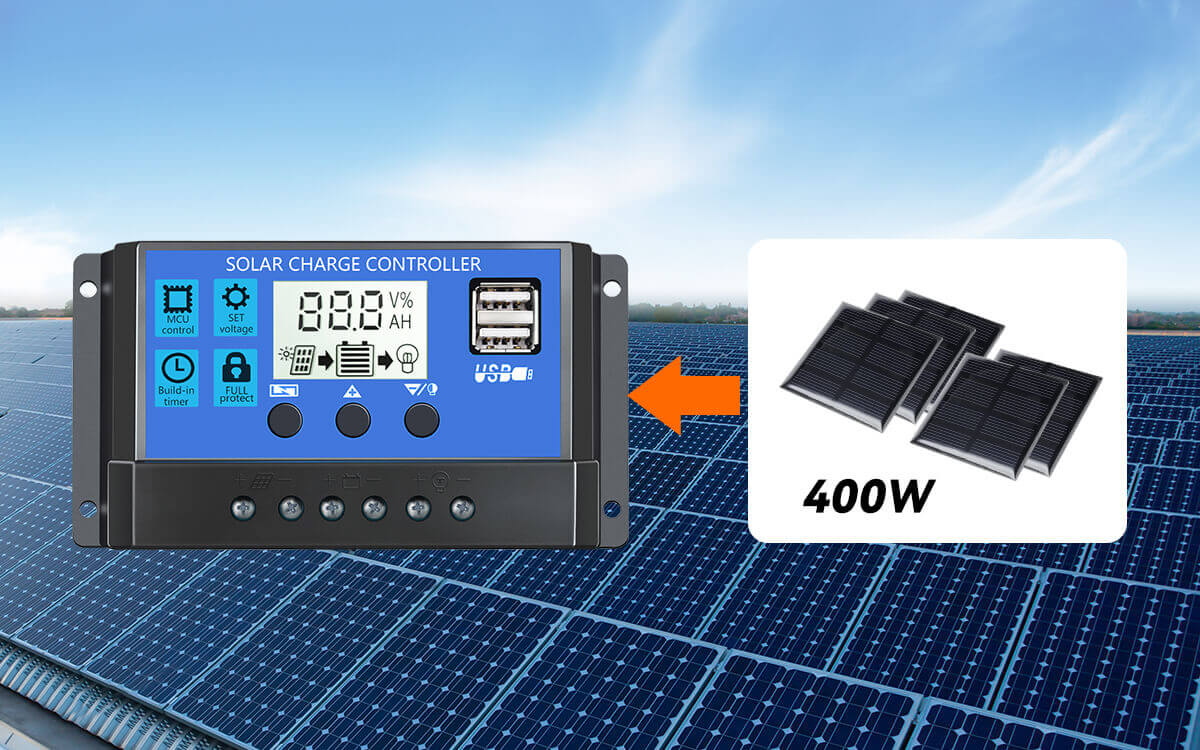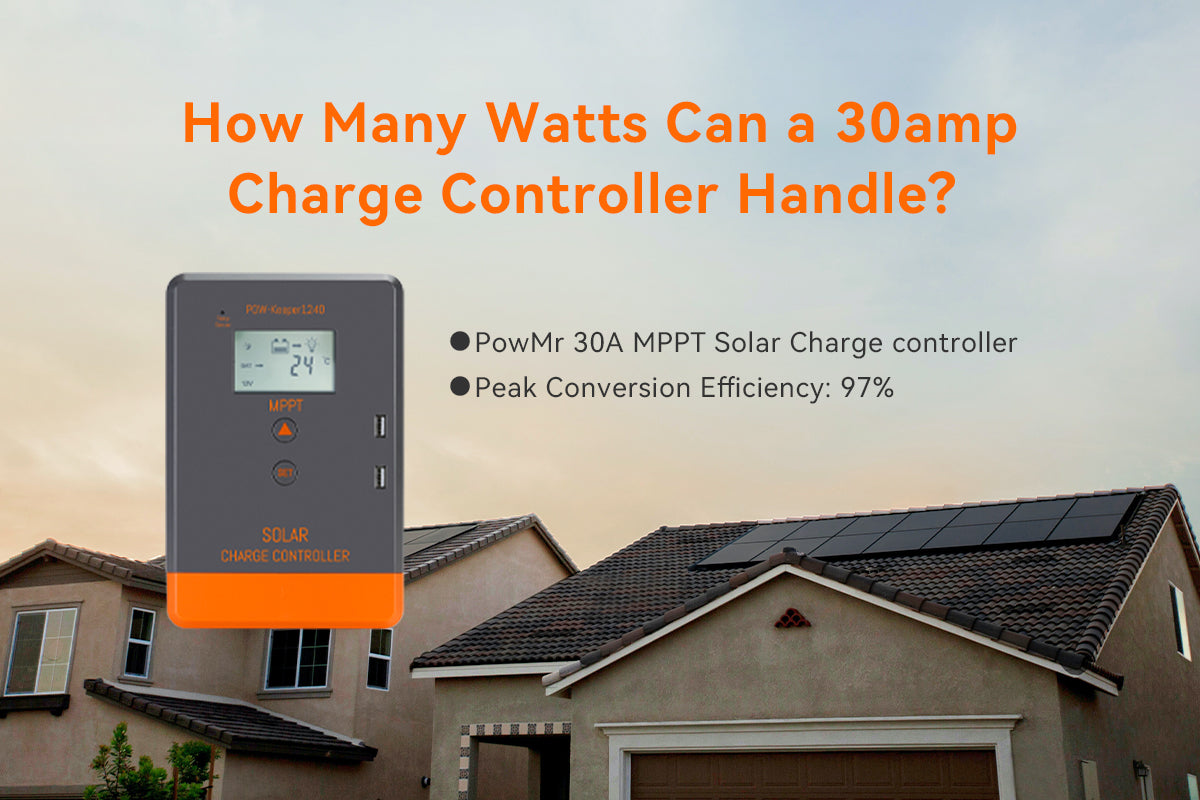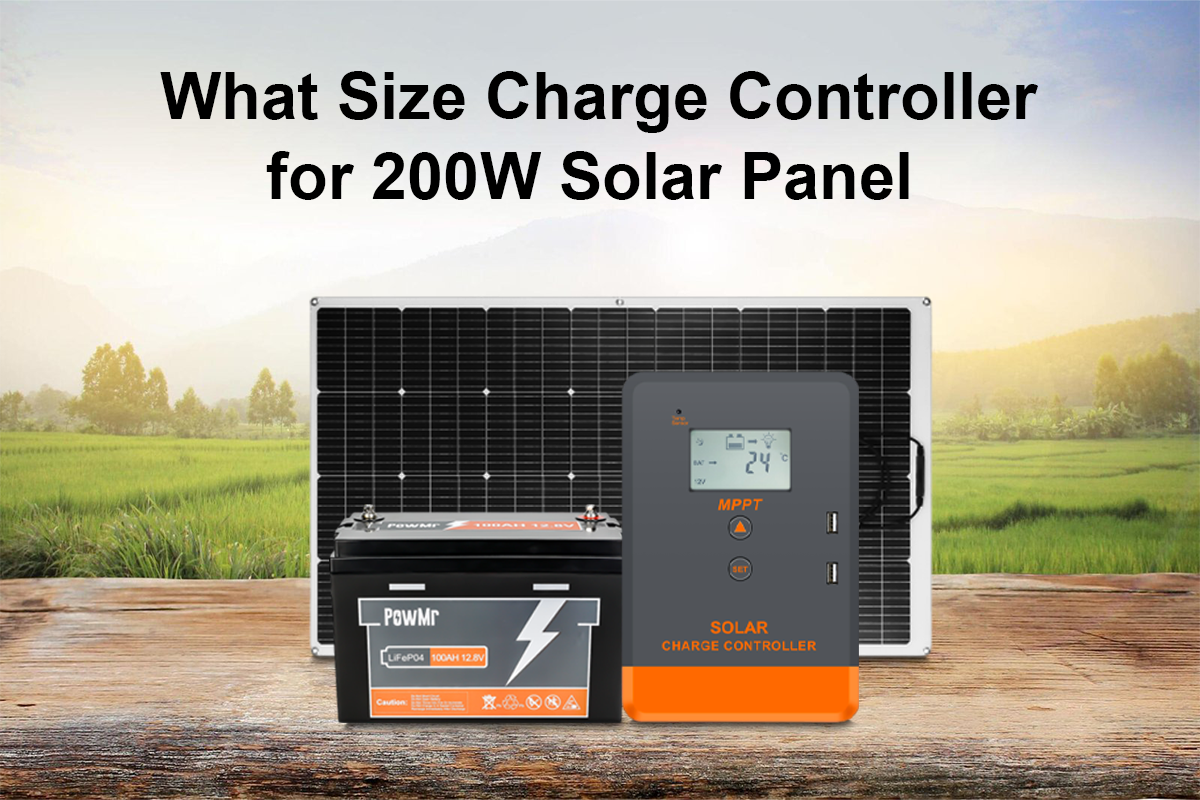Setting up a solar power system requires careful consideration of various components to ensure optimal performance and efficiency. Among these components, the solar charge controller plays a critical role in regulating the power flow from the solar panels to the battery bank.
In this article, we’ll explain which type of charge controller is best for a 400W solar array and explore how to optimize its size by considering key factors like maximum PV input power, input voltage, battery voltage, and charging current requirements.
Which type of charge controller is better for 400w solar panels
There’s a straightforward way to determine which type of charge controller for 400w solar panel: start by checking the Voc (Open Circuit Voltage) of your 400W solar panel setup. Also, note whether your panels are connected in series or parallel, as this affects total voltage.
If 400w solar array voltage is significantly higher than your battery voltage, an MPPT charge controller is the better choice. MPPT controllers are more efficient because they convert excess voltage into usable current.
On the other hand, PWM controllers operate at a voltage close to the battery’s, which can result in energy loss when panel voltage is higher.
Note:
Moreover, to achieve peak efficiency and extract the maximum power potential from the solar panels, the operational voltage range of the solar charge controller must encompass the Vmp of the solar panel. This ensures efficient energy conversion under different sunlight conditions and varying load demands.
Factor1 - What is the maximum power of the solar panel
The maximum power of a solar panel, abbreviated as Pmax, denotes its highest output under ideal conditions. It is crucial for ensuring optimal energy generation and compatibility with the solar charge controllers.
Find it on the label on the back of the panel or in its datasheet, abbreviated as Pmax. Ensure that the total power of the solar panels does not exceed the maximum PV input power of the selected controller.
Factor2 - What is the voltage of your battery system
The voltage of a battery system refers to the nominal (rated) electrical potential of the entire battery bank, typically measured in volts (V). Common voltages used in solar energy systems include 12V, 24V, and 48V, with higher voltages such as 204V or 512V used in larger or industrial-scale setups. This voltage indicates how much electrical energy the system can deliver at a time and directly affects how much current the solar charge controller must handle.
It is crucial to ensure that the solar charge controller is compatible with both the battery bank voltage and the solar array configuration, especially when batteries are connected in series to increase system voltage. A mismatch can lead to system inefficiency, controller failure, or even safety risks.
How many amp of charge controller for 400w solar panel?
The current (in amps) that a charge controller must handle is directly related to how much power your solar panel produces and the voltage of your battery system.
Knowing the two key factors that we mentioned above, you can easily determine the required current rating for your solar charge controller. Use this simple formula:
Controller Current Rating (A) = Total Solar Panel Wattage (W) ÷ Battery Voltage (V)
A 400W solar array is commonly paired with either a 12V or 24V battery system, depending on the application.
For example, a 400W panel with a 12V battery system delivers about 33.3A. Since there’s no exact 33A option on the market, a 35A solar charge controller is a suitable choice.
For a 24V battery system, a 20A solar charge controller is able to handle the 16.7A current from the 400W solar array.
Other considerations when sizing a charge controller
How many amps does a 400W solar panel produce
In addition to Voc, another crucial parameter to consider is the Isc (short-circuit current) of the solar panel, indicating its maximum current output under ideal conditions when terminals are short-circuited.
To prevent potential damage to the controller and battery from PV current, choose a controller with rated charging current greater than the solar panel's short-circuit current, particularly when paralleling solar panels.
How long to charge a battery with 400w solar panel
We recommend prioritizing the selection of a controller to enhance the charging rate based on battery capacity and charging current considerations. Then, determine the size of the solar array.
The battery rated charging current refers to the maximum allowable current at which the battery can be safely charged without damage. It represents the upper limit of the charging rate that the battery can accept. Therefore, it is crucial to ensure that maximum charging current of the solar charge controller does not exceed the rated charging current of the battery.
Is your solar system affected by extreme temperatures
Temperature affects both solar panel output and battery charging. High temperatures reduce panel voltage and charging power, while low temperatures can raise voltage beyond the controller’s input limit. Battery charging efficiency also varies with temperature, risking overcharging or undercharging. To ensure safety and performance, choose a charge controller with temperature compensation or support for external sensors—especially important for lithium batteries or systems exposed to extreme weather conditions.



